The Wackaloon's Guide to the West Country, Part 38(a)(4):
Cornwall, land of Game Hens and Art Institutes
Main -- House -- History -- Cornwall -- Getting There -- On the Road -- The Roads -- London -- The Far West -- Boring Details -- Updates
Ah, Cornwall. This is the westernmost corner of England, an ancient land with a character of its own. But what it does not have is some sort of world-famous major attraction that draws the American tourists out to it. We encounter Cornish things, as often as not, without knowing what they are. So Cornwall may require some explaining.
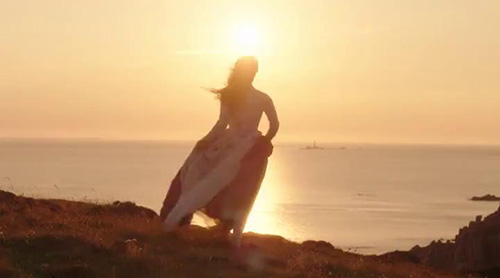 |
Currently, in the US, the likeliest brush you may have lately had with Cornwall is the Poldark series on PBS, where Georgian people periodically stand on clifftops, stare out at the sea, and then go back indoors to mess up their miserable lives even worse. "Honey, I'm just stepping out to stare at the sea for a few hours. Be sure to have my mischief kit loaded up in the wagon when I get back." |
Ancient Cornwall
History is not terribly informative about Cornwall of long, long ago. Geoffrey of Monmouth says it's named after Corineus, who was a pal of an ancient Trojan named Brutus who founded Britain. That's about as clearly untrue as it gets, so one has got to look to other clues.
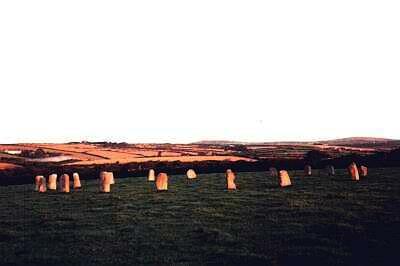 | Well, in the Neolithic and the Bronze Age, the Cornish were doing the same sorts of things others around Britain were doing: building round dwellings, stone circles and tombs. The Merry Maidens circle, left, is an example. Bronze age villages, such as Chysauster and Carn Euny, give us an image of a simple, relatively rural lifestyle, carried on in small communities. |
Many of these remains are available to view today. Some require a bit of a hike, while others are just by the side of the road somewhere -- often quiet, bereft of visitors, and incredibly interesting. There are ancient villages including remarkable features, such as Carn Euny with its magnificent fogou, a large underground chamber which is thought to have been used for food storage (think "Iron Age root cellar"). When we visited Carn Euny last, in the 1980s, there was a man there with a little boy (who is now, I suppose, 30 years old or so). The little boy looked down into the fogou and said, in a cute English accent, "that's where they kept the crocodiles," eliciting from his father the deadpan response, "I don't think there were that many crocodiles in this part of England at that time." If you don't stomp through a little mud and cowshit on your way, see what you miss? | 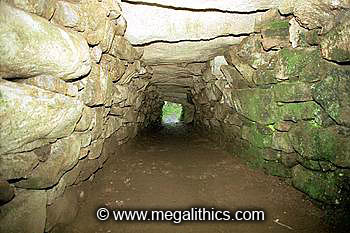 The passage to Carn Euny's fogou--duck! |
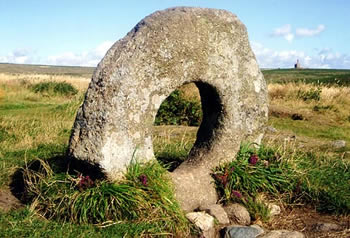 | Homer Simpson-An-TolIf you like doughnuts, and if your idea of a nice doughnut is several feet across and composed of stone, don't miss Men-An-Tol. For the rest of your life a pile of round stones will just remind you of a tub of "doughnut holes." |
Tin!The Romans, whatever else might be said about them, were voracious consumers of metals, and Cornwall and Devon had tin. Interestingly, though we know tin was being mined and sold here long ago, the Romans left almost no remains in Cornwall, which suggests that while their presence in some places -- Bath, London, Colchester, York -- was considerable, they may have mostly just traded with the locals down this way rather than plunking a big fort in the middle of it all and taking over the industry. Early tin-mining in many places was rather like gold-panning. Accessible surface rock would be dug and sifted for ore by washing in streams -- not very capital-intensive, but not very high-yield, either. But, of course, once surface deposits were fairly well exhausted, mining had to proceed by deeper-digging methods. Tin-mining continued to be an important industry in Cornwall for centuries -- the last tin mine closing only in 1998. | 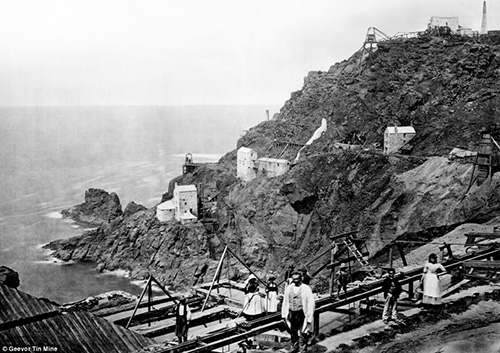 |
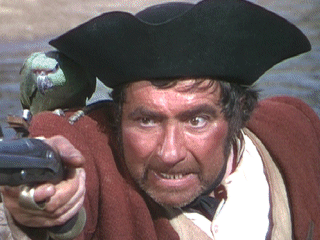 | Pirates and Smugglers!If you've been watching "Poldark" on PBS, you'll know that Cornwall is associated with smuggling and with the closely-related hobby of staring for hours at the sea from dramatic-looking clifftops in your best clothes. Cornwall's complex rocky coastline, with many tiny inlets, was a splendid place for smugglers to get goods ashore, and other forms of high-seas lawlessness found a home here, too. Penzance, as in the pirates-of, is here. The reason Long John Silver says "Ahr" in the Disney film of Treasure Island (set, at least the English bits, in Cornwall) is that pirates are (ahr?) associated with the West. |
Badly-out-of-fashion Brewpubs!It wouldn't be Britain without traditional beers, and it doesn't get much more traditional than this place, just a few miles south of Godolphin House: the Blue Anchor in Helston (right). It's amazing--a fourteenth-century brewpub in a little Cornish town. Hoist a pint. After two or three it's just possible to imagine yourself a couple hundred years ago, eyeing the front door to make sure you beat a hasty retreat should a few Royal Navy officers (they called them "press gangs," but they weren't papparazzi and they weren't looking for the princess, so there'd have been little point in driving drunk at a hundred miles an hour through a tunnel to avoid them) show up to "impress" you into service... | 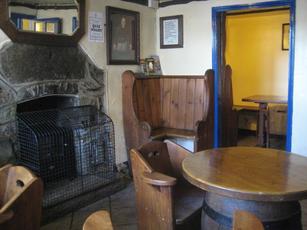 |
Cornwall: Gateway to, well, mostly more Cornwall
Other Cornish things in our culture are here and there...pasties (the food, not the item of scanty apparel), people with names that begin with "Tre," the song about going to St. Ives with all of one's wives, sacks and general impedimenta. The Isles of Scilly, home to a tour company called, of course, Scilly Walks. Land's End -- the place, not the clothing retailer. All of this, together with Arthur's alleged birthplace at Tintagel, awaits....